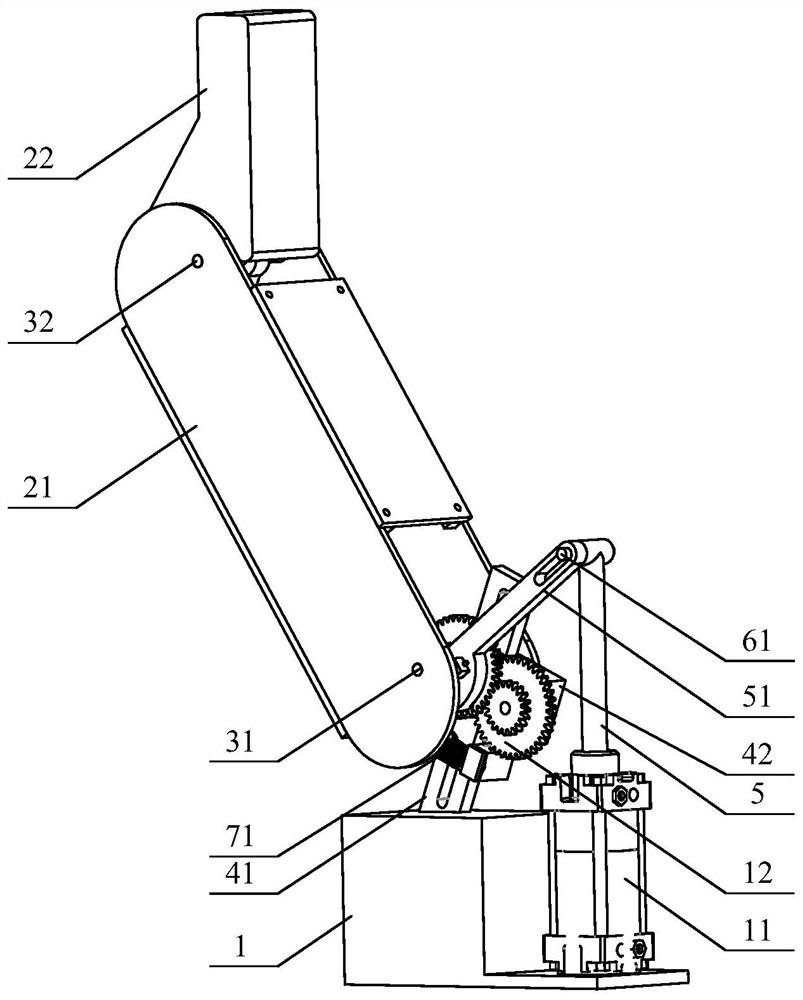Adaptive Robot Finger Device for Slide Bar Delayed Displacement Linear Flat Clamp
A robot finger, self-adaptive technology, applied in the directions of manipulators, chucks, manufacturing tools, etc., can solve the problem of unable to achieve self-adaptive envelope grasping, unable to achieve linear translation of the end finger segment, and increase the collaborative control programming of the manipulator arm. dependencies, etc.
- Summary
- Abstract
- Description
- Claims
- Application Information
AI Technical Summary
Problems solved by technology
Method used
Image
Examples
Embodiment Construction
[0037] The specific structure and working principle of the present invention will be further described in detail below in conjunction with the accompanying drawings and embodiments.
[0038] An embodiment of the sliding bar time-delay displacement linear flat clip self-adaptive robot finger device designed by the present invention, such as Figure 1 to Figure 6 As shown, it includes a base 1, a first finger segment 21, a second finger segment 22, a proximal joint shaft 31, a distal joint shaft 32 and a motor 11; the motor 11 is fixedly connected to the base 1; the first finger segment 21 is sleeved on the proximal joint shaft 31; the distal joint shaft 32 is sleeved in the first finger segment 21; the second finger segment 22 is sleeved on the distal joint shaft 32; the center of the proximal joint shaft 31 line and the central line of the distal joint shaft 32 are parallel to each other; it is characterized in that: the sliding bar time-delay displacement linear flat clip ada...
PUM
 Login to View More
Login to View More Abstract
Description
Claims
Application Information
 Login to View More
Login to View More - R&D
- Intellectual Property
- Life Sciences
- Materials
- Tech Scout
- Unparalleled Data Quality
- Higher Quality Content
- 60% Fewer Hallucinations
Browse by: Latest US Patents, China's latest patents, Technical Efficacy Thesaurus, Application Domain, Technology Topic, Popular Technical Reports.
© 2025 PatSnap. All rights reserved.Legal|Privacy policy|Modern Slavery Act Transparency Statement|Sitemap|About US| Contact US: help@patsnap.com



